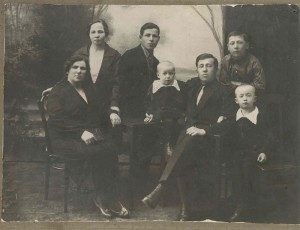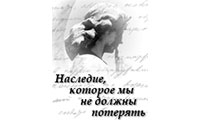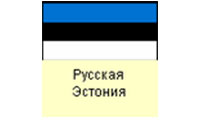Valery Anisimov
Valeriy Anisimov (29th of March 1940, Gorky Oblast (now Nizhny Novgorod Oblast), Russian SFSR) – Doctor of Engineering Sciences, Vice-Rector of the Riga Institute of Civil Aviation Engineers (1975–1984).
Valery Anisimov was born in the town of Sergach, Gorky Region (now Nizhny Novgorod Region, Russian Federation). His father was an accountant, and his mother a schoolteacher. In 1957, he graduated from Sergach Secondary School No. 1 with a gold medal and, in the same year, was admitted through the military enlistment office to the Riga Higher Military Aviation Engineering School (RHMAS), enrolling in the Faculty of Radio Engineering.
In May 1959, the school solemnly celebrated its 40th anniversary, but already in June 1960 the Council of Ministers of the USSR issued a decree to disband the school and to establish, on its basis, a civilian institution of higher education — the Riga Institute of Civil Air Fleet Engineers (RICA), which, since 1967, became known as the Riga Civil Aviation Engineers Institute (RCAEI).
The new institute became the successor of the oldest aviation educational establishment and continued its traditions. Many cadets (the school was considered a branch of the Zhukovsky Air Force Engineering Academy) from the fourth year, including Anisimov, were demobilized and continued their studies at RICA. In 1962, Anisimov graduated from the institute with distinction and was retained at the Department of Communication Systems, where he advanced from senior laboratory assistant to head of department.
As a cadet and later as a student, Valery Anisimov actively participated in student life: he was a member, and later the head, of a scientific society group and took part in amateur artistic activities. He became one of the founders and leaders of the famous RCAEI KVN team (Club of the Cheerful and Resourceful), which gained renown in the 1960s–1980s. Already in 1963, the team performed successfully on All-Union Television. The greatest success came under the leadership of Yuri Radzievsky, who in 1968 was listed among the best captains in the KVN Hall of Fame in Moscow.
The best graduates of the first classes of RICA (1962–1963) joined the teaching and research staff of RCAEI departments and laboratories. In 1972, Valery Anisimov became one of the first graduates to be appointed Head of the Department of Aviation Communication Systems, succeeding Abram Levin, who had held the post for many years. Anisimov remained in this position until 1992, when RCAEI transitioned into the Riga Aviation University.
In the early years of his career, Anisimov worked extensively on developing systems for monitoring the performance quality of aviation equipment. He co-authored an invention — a high-precision moisture meter for laboratory control of moisture content in aviation fuel. As head of department, he became one of the initiators and principal implementers of a new program for training engineers specializing in the technical operation of aviation communication systems in civil aviation institutes.
The department was staffed with outstanding teachers and talented scientists, such as A. Levin, V. Panasenko, N. Peshkov, O. Shchiptsov, V. Silantyev, A. Skalsky, V. Zaznov, and others. The department was known for its excellent psychological climate. In the 1970s, the Political Administration of the Ministry of Civil Aviation (MCA) introduced the post of Vice-Rector for Educational and Upbringing Work in Civil Aviation universities — a position unique to this field due to the high level of responsibility and the human factor involved.
In 1973, Rector A. Flerov appointed V. Anisimov to this challenging and responsible position. He effectively established the mechanism for this new administrative direction, writing numerous methodological materials on organizing educational and moral work and defining the management structure for these activities. He was skilled at building communication with students, especially with the student leadership.
During these years, student activity flourished in various areas:
-
Student self-government as the foundation of educational work;
-
Student construction brigades (summer) and agricultural brigades (spring and autumn);
-
Student research and scientific creativity;
-
Student amateur artistic performance.
In place of the 1960s KVN competitions came the “Student Spring” festivals of amateur art, one of the main parts of which was the Student Variety Theater of Miniatures (STEM). Each faculty had its own STEM group, and annual contests were held.
Faculty teams presented lively, witty, and colorful performances about student life and the life of the country. Faculty-level contests culminated in the annual “Student Spring” festival, where genuine talents were discovered. Foreign students also took an active part in these contests and festivals. The vocal-instrumental theater-studio “TEST” and other ensembles enjoyed great popularity. All these successes were achieved in part thanks to Valery Anisimov’s capable leadership.
At the same time, Valery Anisimov actively and successfully engaged in scientific research. In the 1970s, he was the principal executor of research projects aimed at developing the scientific basis for the Unified Civil Aviation Communications Network (UCACN) of the USSR, which operated until the country’s dissolution.
In the 1990s, he was the scientific supervisor and principal executor of research and design projects for the implementation of digital communication networks in the airports of Riga, Moscow, Almaty, Kazan, and Frunze, and a co-executor of a satellite communication network project for air traffic control in the Republic of Kazakhstan. The work was carried out jointly with the Scientific Research Institute of Space Communications (Krasnoyarsk). In 1997, the first satellite communication line was launched, connecting the central station at Almaty Airport with a peripheral station at Ürümqi Airport.
Valery Anisimov is the author and co-author of more than 40 publications, including scientific articles, research and design reports, educational and methodological materials, and inventor’s certificates.
He is now retired.
Compiled by Vladimir Shestakov.










